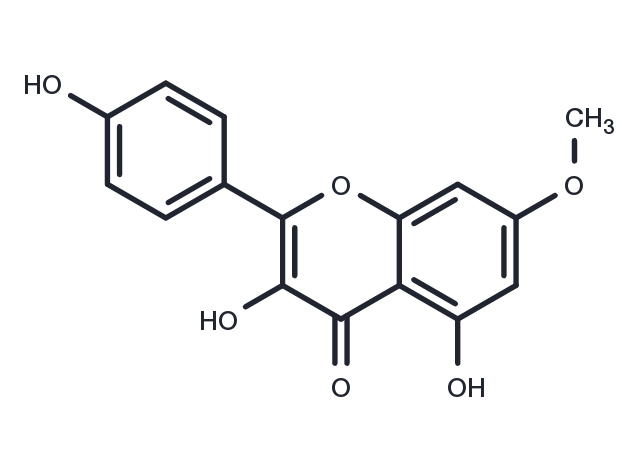Powder: -20°C for 3 years | In solvent: -80°C for 1 year


Rhamnocitrin can enhance the immune function, improve the formation of spleen cells of mice serum hemolysin of chicken red blood cell immune.

| Pack Size | Availability | Price/USD | Quantity |
|---|---|---|---|
| 1 mg | In stock | $ 82.00 | |
| 5 mg | In stock | $ 197.00 | |
| 1 mL * 10 mM (in DMSO) | In stock | $ 253.00 |



| Description | Rhamnocitrin can enhance the immune function, improve the formation of spleen cells of mice serum hemolysin of chicken red blood cell immune. |
| In vitro | In cataract, the oxidation-antioxidant equilibrium shift more towards oxidative stress. Accordingly, antioxidants could prove potential anticataract agents. Rhamnocitrin, a flavonoid, possess strong antioxidant effects; can be used effectively to manage the cataract. Therefore, anticataract activity of Rhamnocitrin (10, 20, 40 and 80 μg), isolated from Bauhinia variegata (Leguminosae) stem bark, was studied in ovine and chick embryo lens model. It showed a significant protection against cloudiness in lenses induced by hydrogen peroxide and hydrocortisone in a dose dependent manner. |
| Source |
| Molecular Weight | 300.26 |
| Formula | C16H12O6 |
| CAS No. | 569-92-6 |
Powder: -20°C for 3 years | In solvent: -80°C for 1 year
DMSO: 3.6 mg/mL (11.99 mM)
You can also refer to dose conversion for different animals. More
bottom
Please see Inhibitor Handling Instructions for more frequently ask questions. Topics include: how to prepare stock solutions, how to store products, and cautions on cell-based assays & animal experiments, etc.
Rhamnocitrin 569-92-6 Others astragalus flavonoid inhibit anti-inflammatory Inhibitor complanatus an-tiatherosclerosis anti-oxidant DPPH inhibitor
